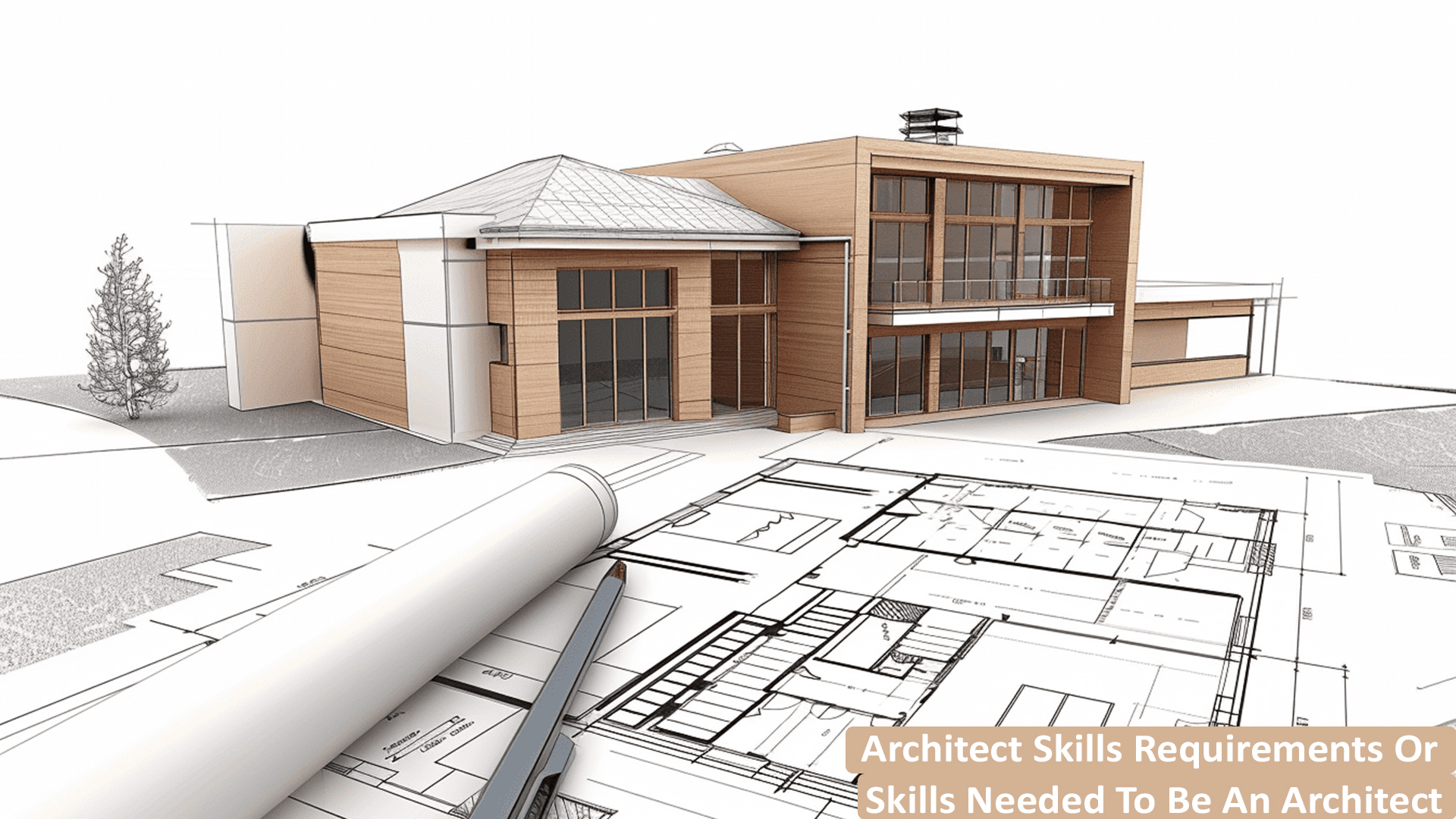Architect Workflow Improvement for Faster Project Delivery
Architect Workflow Improvement for Faster Project Delivery
Blog Article
Comprehending the Diverse Occupation Paths Available for Aspiring Architect
As a hopeful Architect, you have a world of career paths awaiting you. Each course provides unique obstacles and possibilities to apply your creativity and technological knowledge. Whether you're drawn to standard architecture or the subtleties of lasting design, there's a specific niche that lines up with your rate of interests. Recognizing these varied options can form your expert trip, yet which instructions will you pick to check out initially?
Traditional Architecture: Designing Frameworks and buildings
Standard design concentrates on making buildings and frameworks that mix functionality with visual appeal. As you discover this area, you'll appreciate the complex balance between type and function. You'll learn to draw motivation from historic designs, incorporating components like balance, materials, and workmanship. Your styles can mirror cultural heritage, showcasing local practices while satisfying modern-day requirements.
You'll establish skills in drafting, model-making, and site analysis, permitting you to imagine and communicate your ideas efficiently. Involving with customers, you'll need to recognize their vision and equate it right into possible layouts.
Moreover, constructing codes and sustainability practices are essential in your job, ensuring your frameworks are eco friendly and secure. As you expand in your career, you'll find chances in residential, industrial, or even remediation jobs, each offering unique challenges. Welcoming traditional architecture leads the way for a satisfying job that admires the past while forming the future.
Urban Planning: Forming Neighborhoods and Public Spaces
As an aspiring Architect, you can play a vital function as an urban coordinator, transforming exactly how neighborhoods function and connect. By employing neighborhood engagement techniques, you'll assure that homeowners have a voice in shaping their atmosphere. And also, incorporating lasting style principles will certainly aid develop rooms that not only satisfy today's needs yet likewise secure the future.
Role of Urban Planners
While several may believe of designers as the sole dreamers behind structures, city organizers play an important role in shaping the wider landscape of communities and public areas. By working together with numerous stakeholders, you'll aid design parks, transport systems, and residential areas that advertise social communication and accessibility. Your proficiency in spatial design and community dynamics permits you to envision future development while maintaining cultural heritage.
Area Interaction Methods
Efficient area involvement techniques are vital for metropolitan coordinators to assure that the voices of residents are heard and valued in the planning process. To promote meaningful dialogue, you need to focus on open discussion forums and workshops where area members can reveal their ideas and concerns. Usage surveys and social media sites to reach a more comprehensive audience, ensuring varied viewpoints are consisted of. Teaming up with neighborhood organizations can boost trust fund and assist in much deeper links. It is essential to offer clear info about suggested projects and decision-making procedures, enabling homeowners to feel enlightened and equipped. By actively incorporating and listening responses, you'll develop rooms that reflect the neighborhood's needs, eventually resulting in even more successful and sustainable city settings. Welcome transparency and constant dialogue for long-term influence.
Sustainable Layout Concepts
When developing metropolitan rooms, incorporating sustainable design principles is critical for producing environments that grow both environmentally and socially. You need to start by focusing on energy efficiency, making use of products that minimize waste and promote recycling. Consider integrating green spaces, like gardens and parks, to improve biodiversity and enhance air high quality. Promoting walkability and public transport can lessen reliance on vehicles, fostering a much healthier neighborhood.
Creating with water preservation in mind is additionally vital-- think of rainfall gardens and absorptive surfaces to manage stormwater. Involving area participants during the planning procedure guarantees that the areas you produce fulfill their requirements and motivate social communication. By accepting these principles, you'll add to vivid, lasting city landscapes that benefit everybody.

Landscape Architecture: Creating Lasting Outdoor Environments
As you check out landscape design, you'll find important design principles that produce lovely and functional exterior rooms. Sustainable practices play an important role in ensuring these settings prosper while decreasing environmental effect. And also, you'll find a range of occupation chances that enable you to make a real distinction in just how people communicate with nature.
Layout Concepts in Landscape
Comprehending design principles in landscape architecture is crucial for developing sustainable exterior environments that balance with nature. You'll require to ponder elements like percentage, equilibrium, and range to guarantee your layouts really feel natural and welcoming. Furthermore, pay attention to seasonal adjustments, making with products that complement the surroundings year-round.
Sustainable Practices Overview
Lasting techniques in landscape design not only concentrate on looks but likewise focus on ecological wellness and resource preservation. By integrating native plants, you boost biodiversity and minimize the requirement for chemical fertilizers and pesticides. Implementing efficient irrigation systems assists conserve water and reduces overflow, securing close-by environments. You can develop areas that advertise soil health, such as using natural products and check out this site practicing permaculture concepts. Furthermore, including green facilities, like rain gardens and permeable sidewalks, help in stormwater administration and lowers urban warmth. When you create outdoor environments with sustainability in mind, you add to a much healthier planet and provide areas that promote area link. Inevitably, these methods guarantee your designs profit both individuals and the environment for several years to come.
Career Opportunities Exploration
With a solid foundation in sustainable techniques, landscape architecture supplies a selection of profession courses that permit you to make a meaningful effect on the setting. Urban organizers often work together with landscape architects to produce environment-friendly areas in urban setups, boosting city livability. If you're enthusiastic regarding education, think about becoming a landscape design teacher, inspiring future generations.
Lasting Layout: Concentrating On Eco-Friendly Practices
As you discover your career in design, accepting environment-friendly practices can set you apart in an affordable field. Sustainable design focuses on creating structures that lessen ecological influence while boosting resident wellness. By including eco-friendly products, energy-efficient systems, and sustainable building techniques, you'll add to a greener future.
Begin by acquiring expertise of environment-friendly accreditations like LEED or BREEAM, which can bolster your qualifications. Take into consideration how natural light, ventilation, and thermal effectiveness can optimize design. Team up with engineers and ecological specialists to introduce remedies that decrease waste and preserve sources.
Don't forget the significance of community participation-- engaging neighborhood stakeholders can influence styles that integrate with the setting. As clients significantly prioritize sustainability, your know-how in eco-friendly techniques will not only draw in tasks yet also meet your enthusiasm for liable design. Embrace this vital element of the profession, and view your career thrive.
Historical Preservation: Securing and Restoring Social Heritage
While you commence on your building journey, consider the crucial duty of historical preservation in maintaining our social heritage. This field concentrates on the protection and remediation of significant buildings, websites, and structures that tell the stories of our past. By taking part in historic conservation, you'll aid guard the building legacy that shapes area identification.
As a historical conservation Architect, you'll analyze historic significance and assess the condition of frameworks. You'll function closely with historians and conservationists to guarantee authentic repair strategies are used. This occupation path allows you to blend creativity with research, allowing you to make solutions that respect original products and workmanship.
Your job not only adds to sustainability by reusing existing structures yet likewise fosters a sense of pride within communities. Accepting this course will assist you end up being a guardian of background, protecting the tales and appearances that enhance our lives.
Interior Architecture: Enhancing Indoor Spaces
Historic preservation and interior style both share a commitment to boosting the developed environment, but they concentrate on various elements. While historic conservation stresses maintaining a structure's social and historic worth, interior design zeroes in on maximizing interior spaces for performance and aesthetics.
As an aspiring Architect, you'll find that interior style permits you to mix creative thinking with technological skills. You'll make areas that not just look good however additionally promote convenience and efficiency. This area includes recognizing just how light, shade, and materials communicate within a room, influencing mood and use.
You'll service various tasks, from residential homes to industrial workplaces, making certain that each environment satisfies the demands of its passengers. By focusing on customer experience, you can transform interiors into inspiring and functional rooms, making a significant influence on how individuals engage with their surroundings. Welcome the possibility to boost interior atmospheres and form the method people function and live.
Industrial Design: Combining Capability With Aesthetics
Commercial design plays a necessary role in producing products that flawlessly blend appearances with capability, ensuring that what you utilize daily is not just aesthetically attractive but also practical. As an ambitious Architect, you can involve yourself in this area, focusing on making whatever from furniture to consumer electronic devices. Your work includes recognizing customer demands, materials, and producing processes, allowing you to create ingenious services that improve everyday experiences.
In industrial style, you'll commonly work together with marketers, designers, and makers, making look here sure that your styles are not only attractive but also possible. This career path uses a vibrant atmosphere where creativity satisfies usefulness, making it a rewarding choice for engineers interested in shaping the items of tomorrow.
Frequently Asked Questions
What Educational Accreditations Do I Required to Become a Designer?
To become a designer, you'll require an expert level in architecture, usually a Bachelor's or Master's. In addition, you'll need to complete a teaching fellowship and pass the Architect Enrollment Assessment to exercise lawfully.
Exist Certification Needs for Various Building Profession Paths?
Yes, there're accreditation needs for different building paths. Architect. You'll require to pass examinations, full teaching fellowships, and often pursue specialized training, depending on your picked focus, like landscape architecture, metropolitan style, or historic preservation
What Software Skills Are Crucial for Engineers Today?

Exactly How Can I Gain Practical Experience While Examining Design?
You can acquire practical experience by interning at architectural companies, participating in layout competitors, volunteering for neighborhood tasks, or working together with schoolmates on real-world jobs. These possibilities boost your skills and build valuable connections in the market.
What Job Opportunities Exist Outside Standard Design Firms?
You can check out numerous work chances outside traditional design firms, like urban preparation, interior decoration, landscape design, construction management, realty development, or also duties in sustainability consulting. Each offers distinct challenges and benefits.
Whether you're attracted to typical style or the nuances of sustainable style, there's a particular niche that straightens with your rate of interests.When developing urban areas, integrating sustainable style concepts is vital for producing atmospheres that flourish both environmentally and socially.As you check out landscape style, you'll find important layout concepts that develop stunning and practical outside rooms.Comprehending design concepts in landscape style is important for producing lasting outside environments that balance with nature.In commercial design, you'll usually team up with designers, marketers, and manufacturers, ensuring that your layouts are not only gorgeous yet also practical.
Report this page